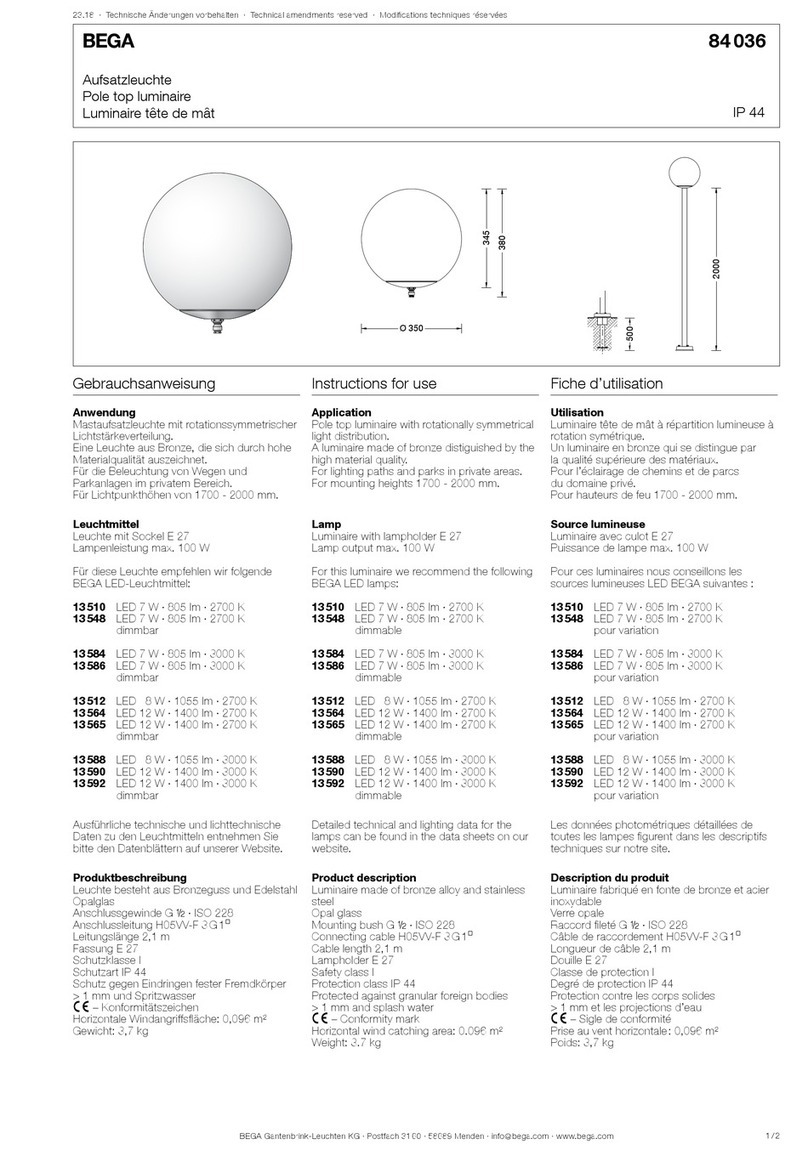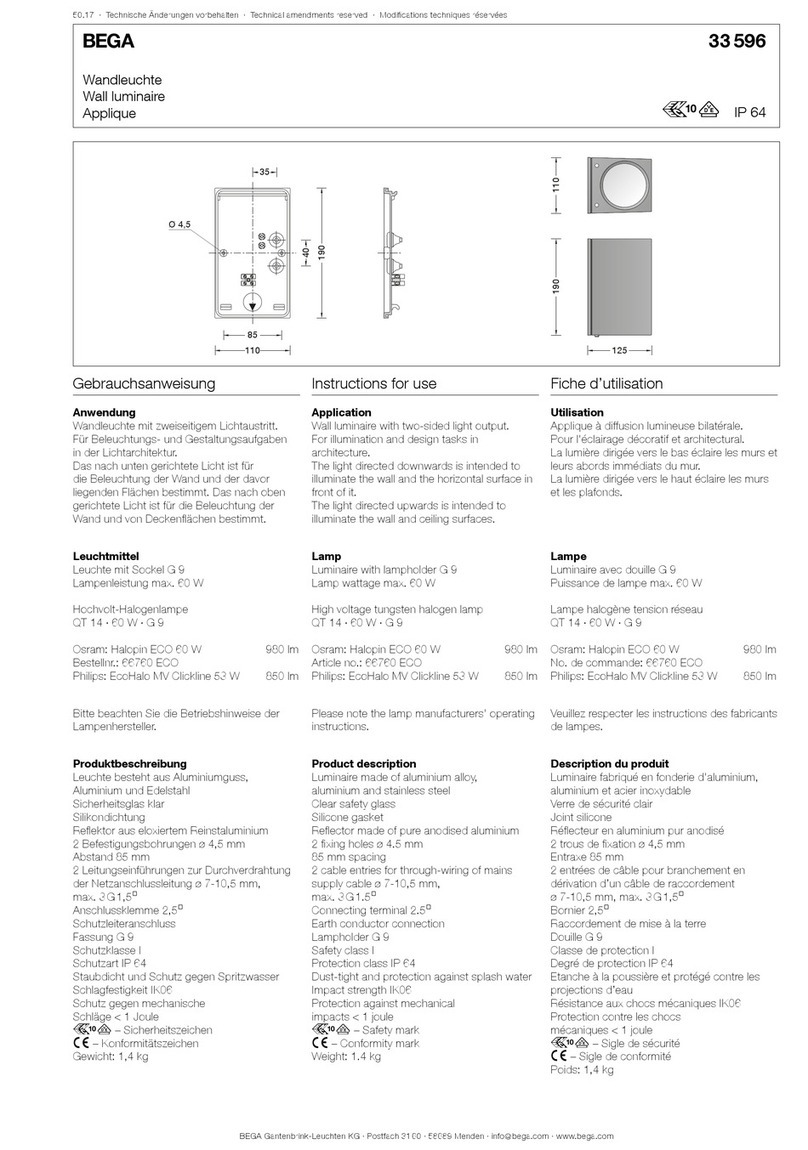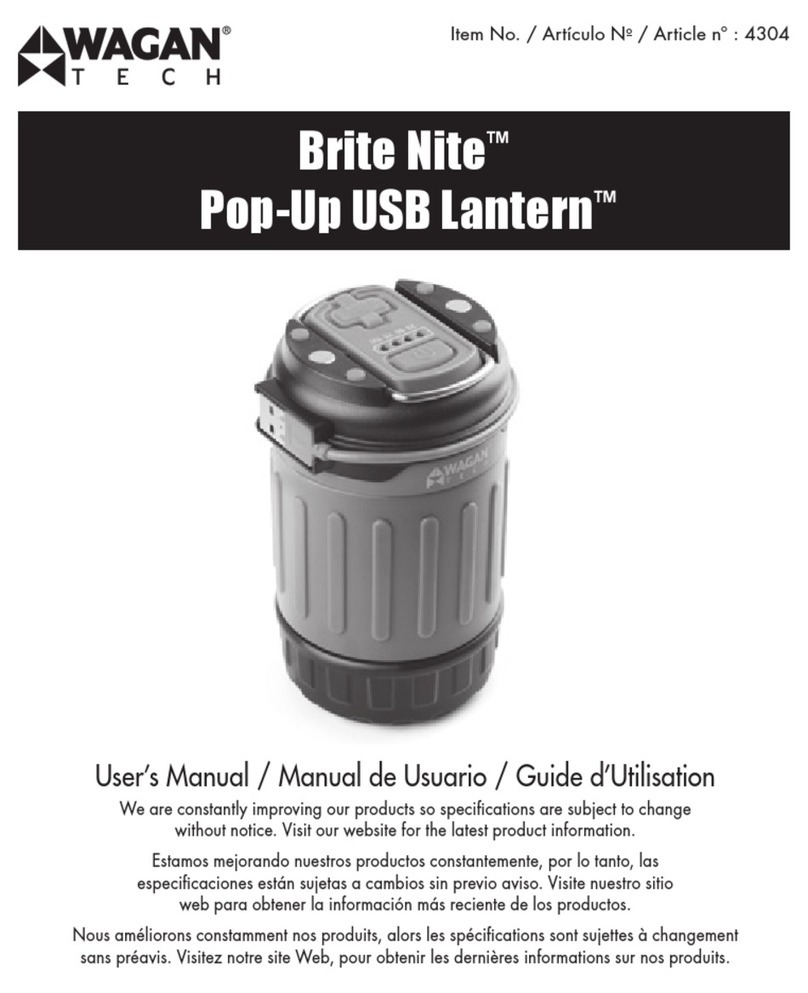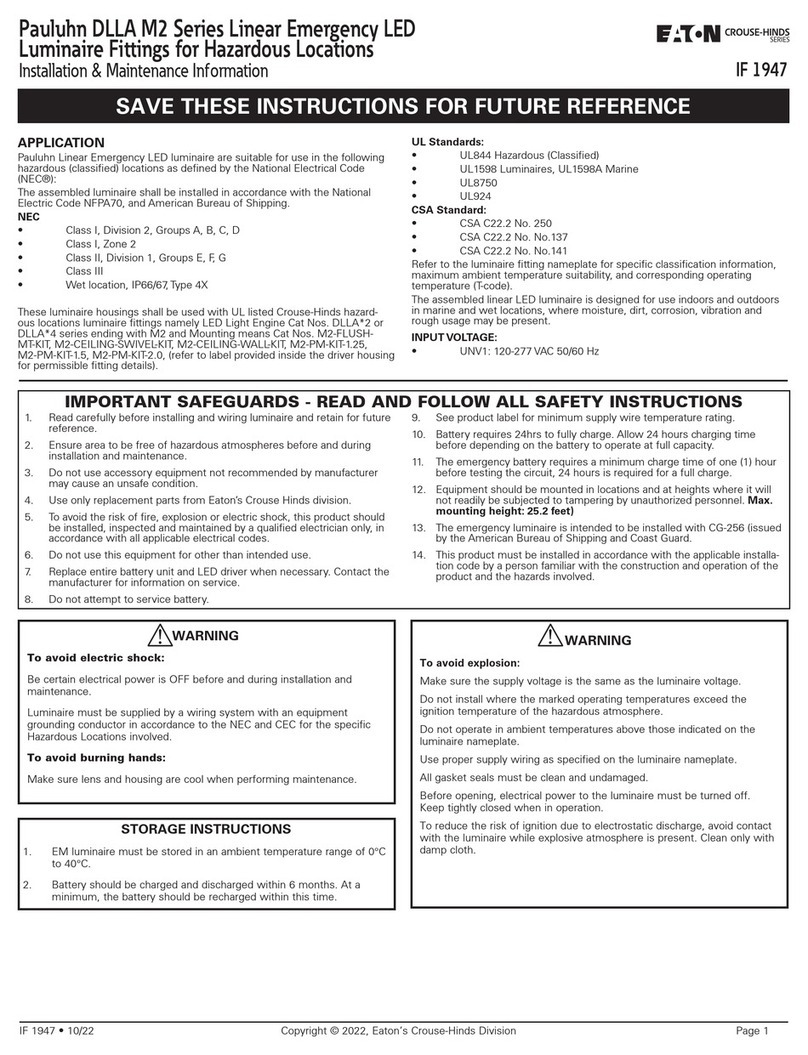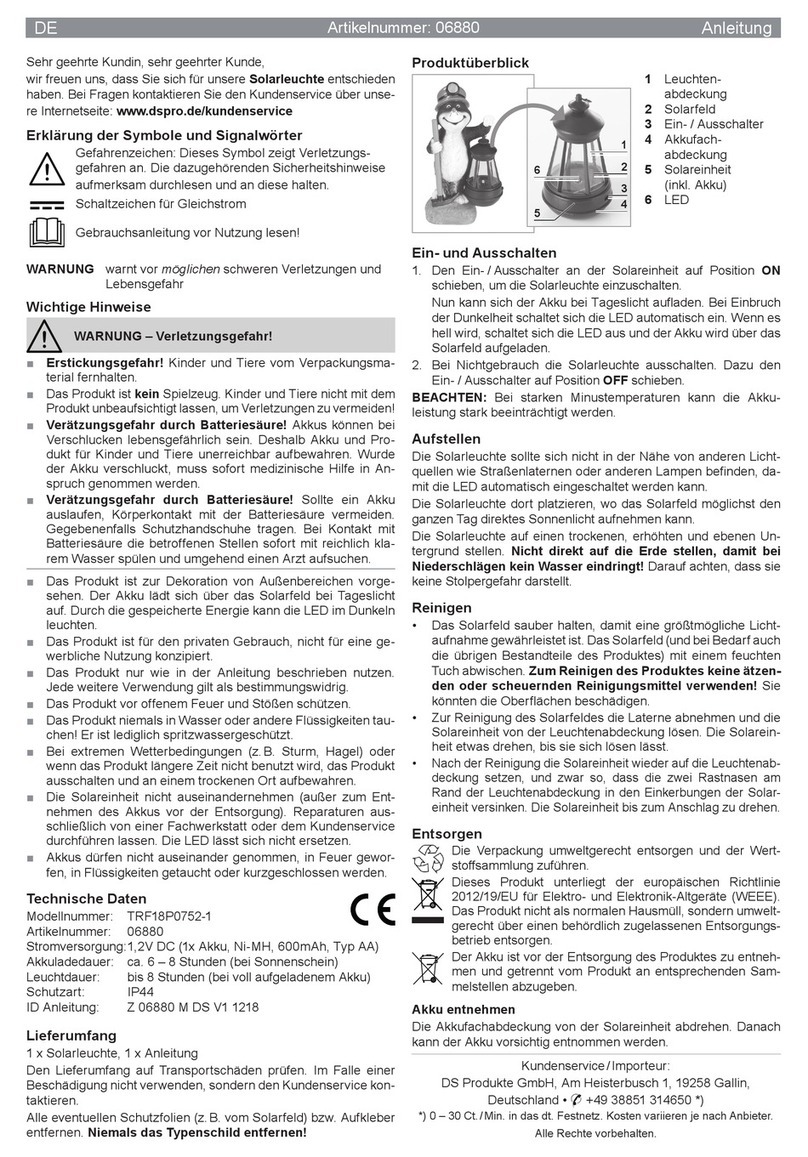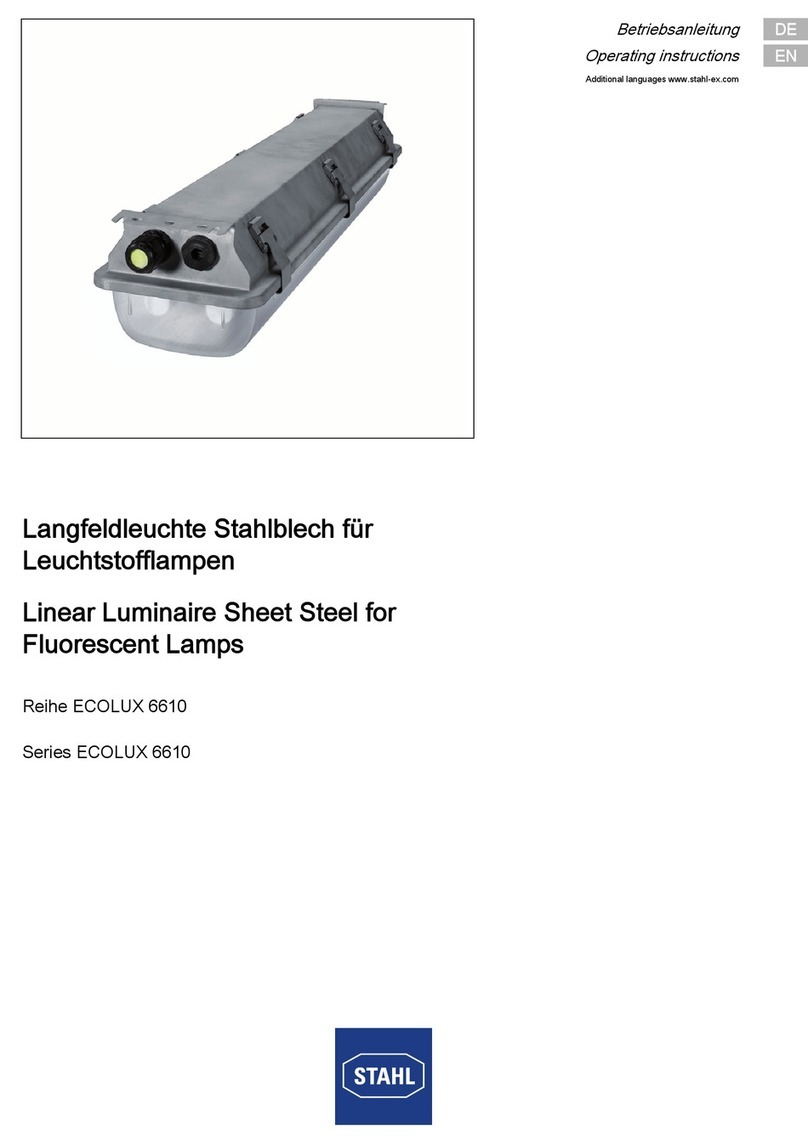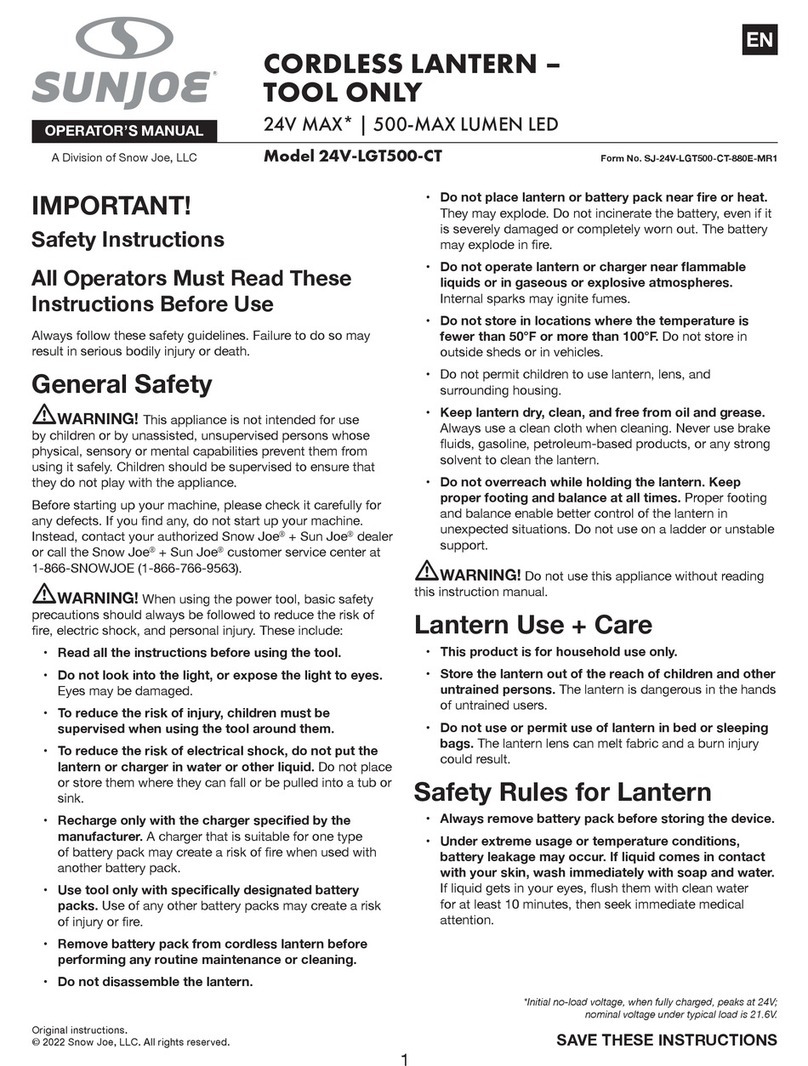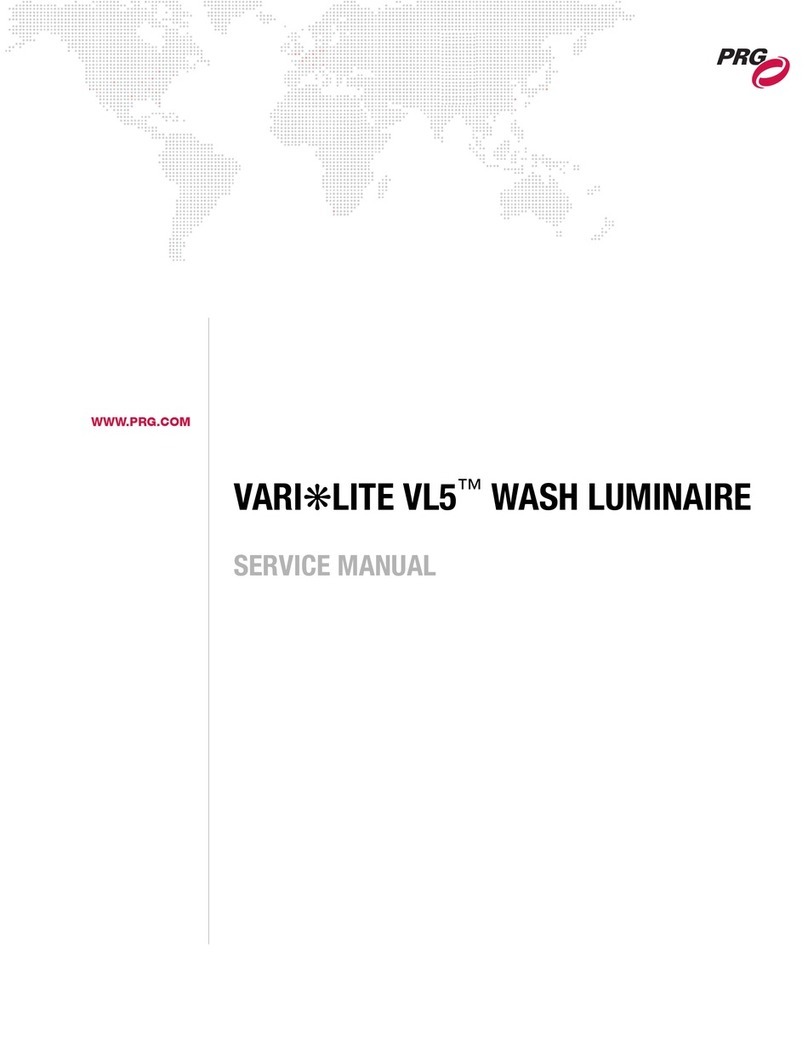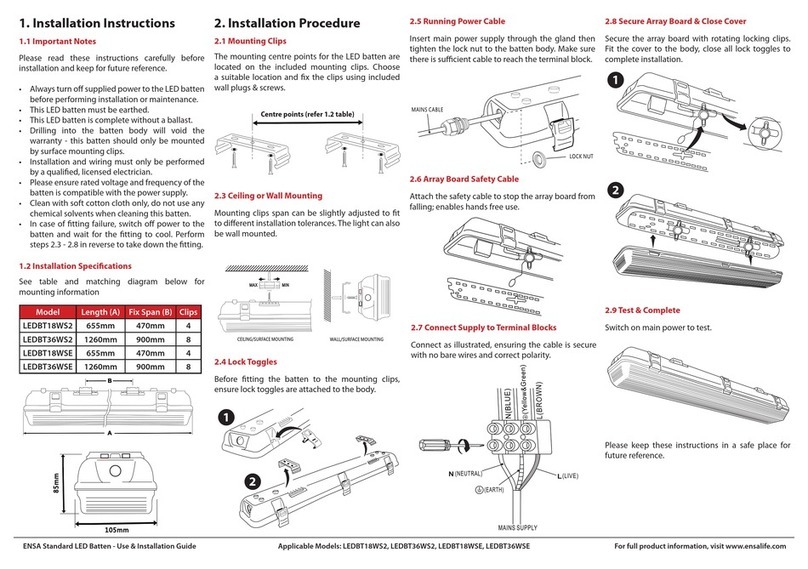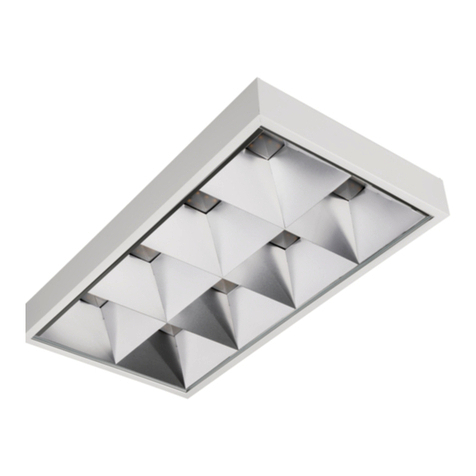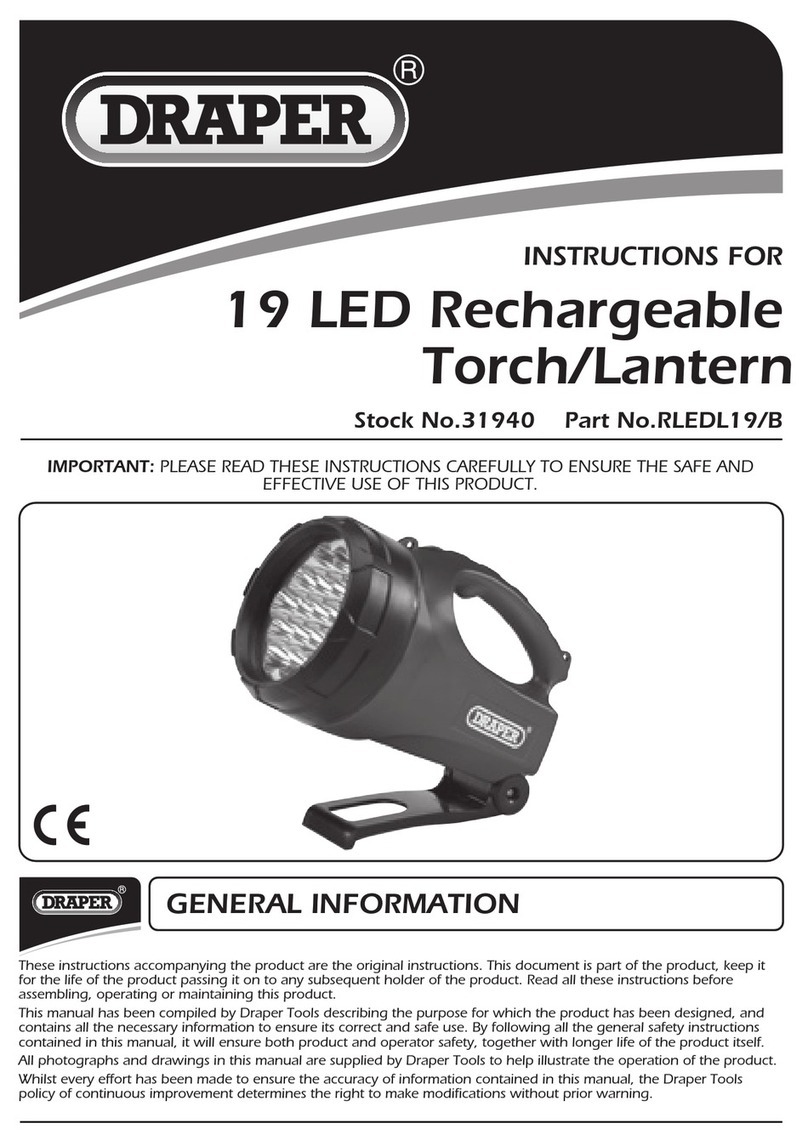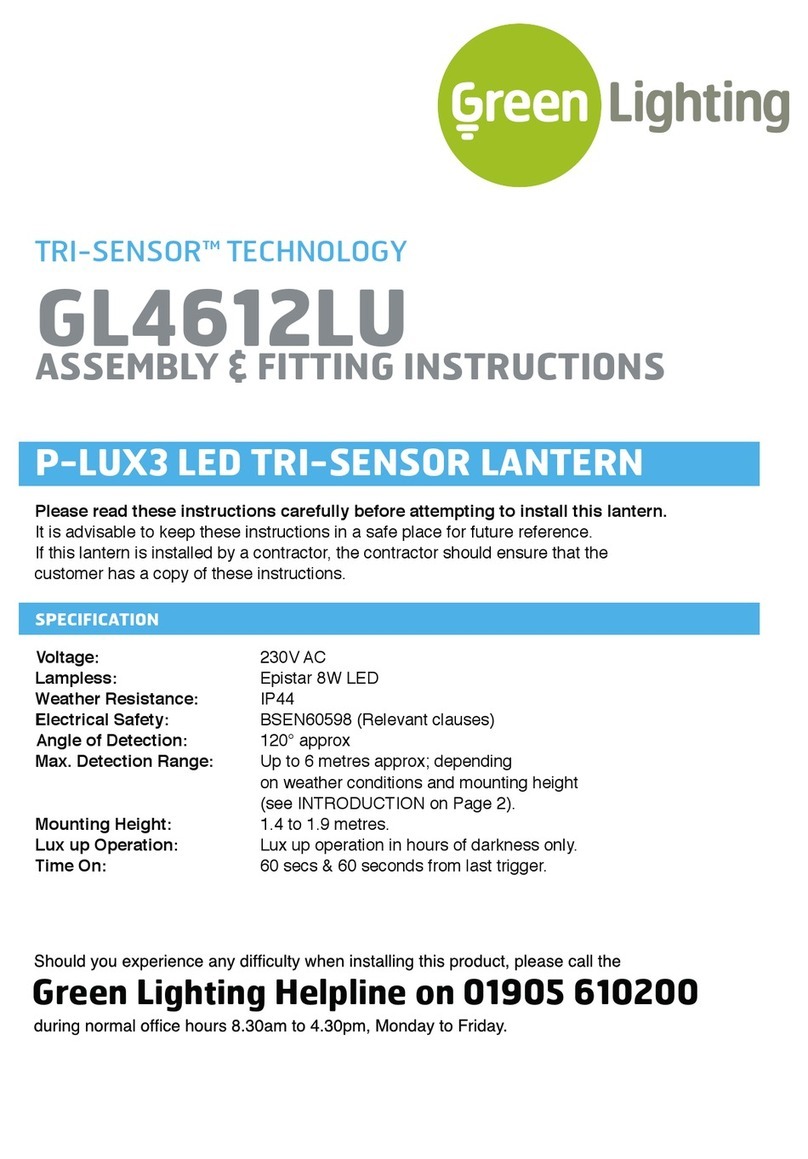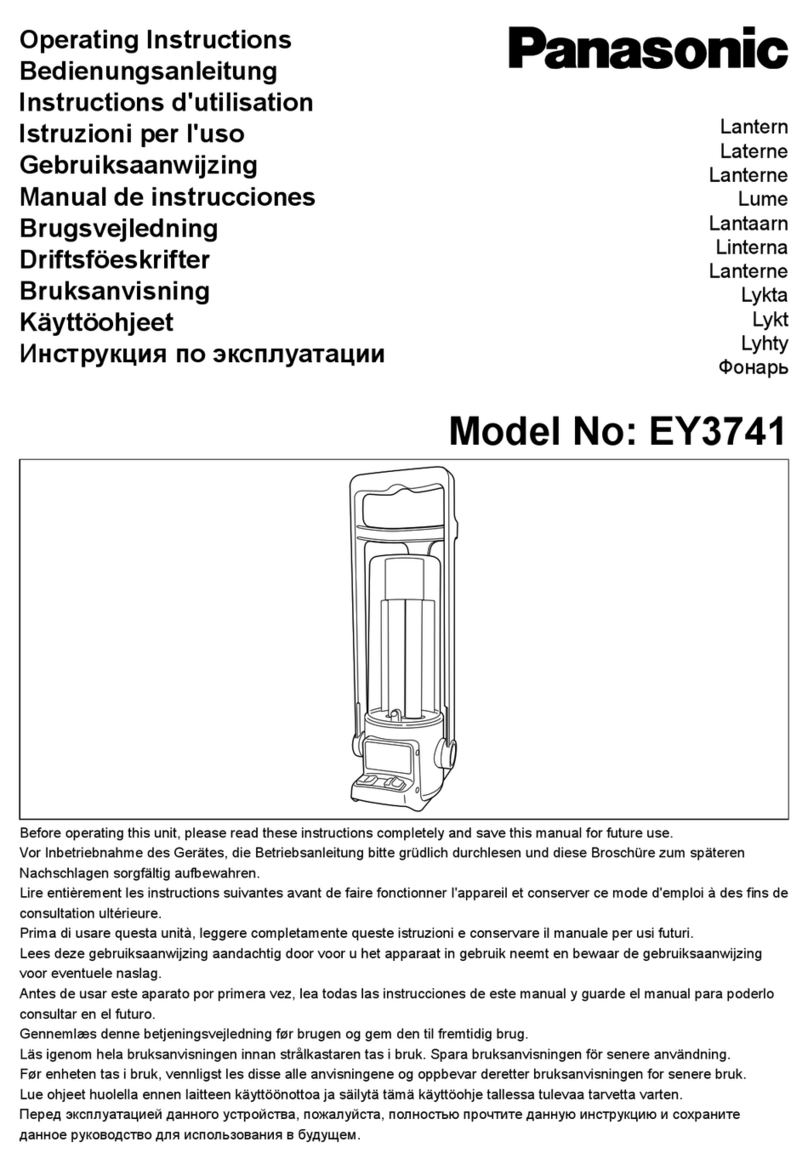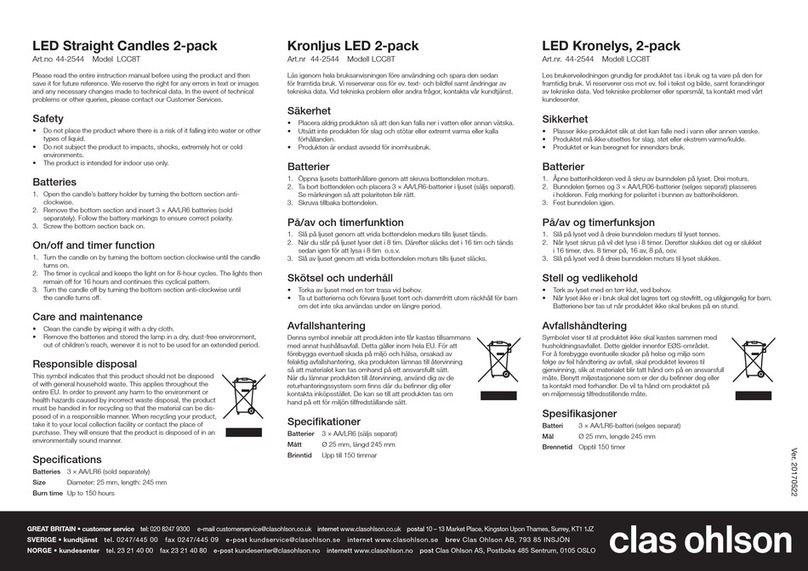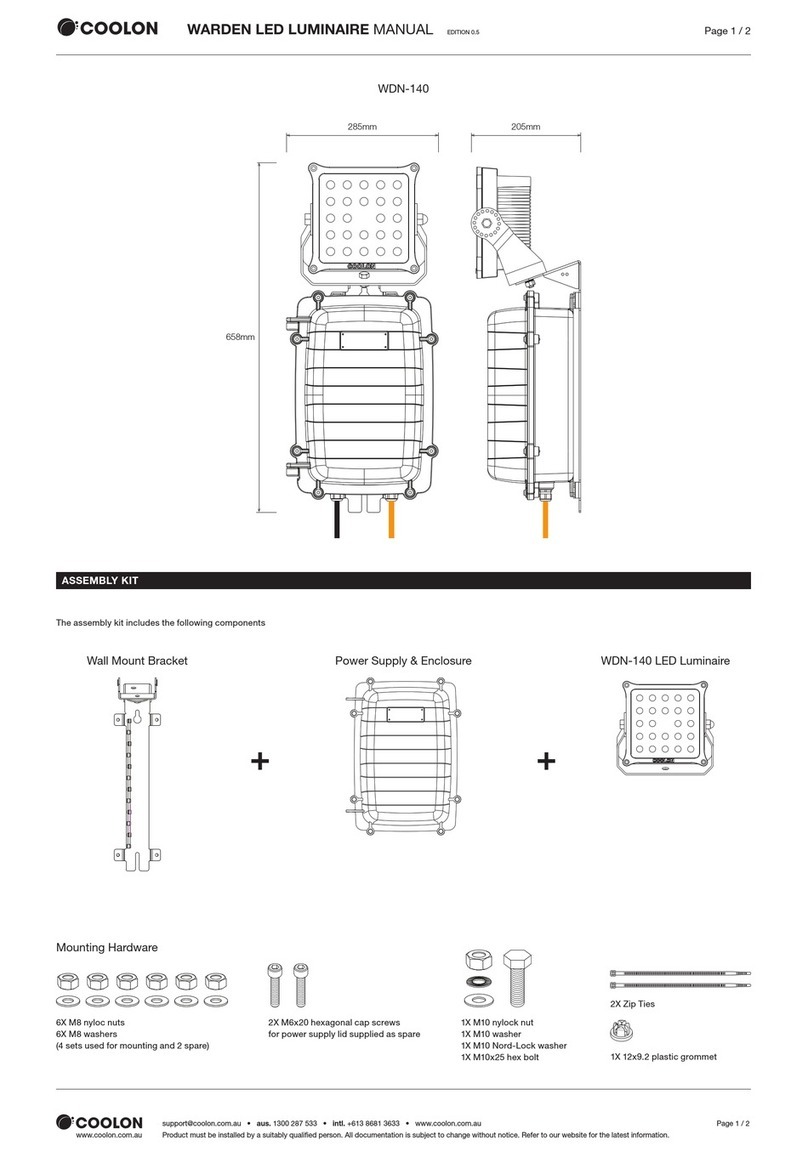
Vega VLB-44 Lantern 25 Jan 2011 - Rev 9
Programming (cont’d)
B. Intensity. Next, assemble the codes, as shown below for your intensity setting programming
sequence:
Code
Operation Programming 1
Feature Nighttime Intensity 1 (daytime intensity code 2; see below)
Value Intensity, 7280 7280
The programming sequence for this example is 1 1 7 2 8 0. Important Note: if you omit or fail
to program the zero (0) in this code, the lantern will have an intensity of 728 candelas, not 7280
candelas. Intensity codes are 4 digits, so an intensity of 83 candelas has a code of 0083.
With power applied to the lantern in a lighted room or outside, aim the remote at the window
above the label and:
1. Press and hold the
standby/program/program button for
5 seconds.
2. Enter the programming sequence for
the intensity 117280 (wait for
confirmation flash after each digit)
3. Leave the programmer idle for 10
seconds to exit the programming
mode.
The lantern will give 4 quick flashes to
indicate that it has entered the programming
mode.
The lantern will flash once each time a key
on the programmer is pressed. When the
sequence is entered and accepted, the lantern
will display the value 7280 as a series of
flashes as: 7 quick flashes followed by a 0.5
sec gap, 2 quick flashes followed by a 0.5
sec gap, 8 quick flashes followed by a 0.5
sec gap and finally a 2 second flash
representing zero (0).
The light will give 2 quick flashes followed
by a short pause, then another 2 quick
flashes. After this it will flash on the
programmed rhythm at the selected intensity
for 16-20 seconds.
Note: unsuccessful programming sessions will be followed by 3 quick flashes followed by the
lantern returning to the programming mode (step 2). Try the code again, or wait at least 10
seconds to exit the programming mode and reenter the above sequence (step 1).
If the VLB-44 is the main light controlled by a SACII/III, the lantern must be commanded on
both day and night, and intensity set for both day and night. The code to turn the lantern on
during the day (ignoring the daylight control input) is 14109. The daytime intensity must also be
programmed so that the lantern displays the same intensity both night and day since the SACII/III
has the daylight control function. The SACII/III controls day/night operation of the lantern by
switching power on at dusk and off at dawn. In the above example, the code for the daytime
intensity is 127280. Three program codes must be entered (four including the flash rhythm):
command lantern on during day – 14109, nighttime intensity – 117280 and daytime intensity –
127280. These codes (along with the flash rhythm) can be entered sequentially after the lantern
flashes back the sequence, but before the lantern exits the programming mode (within 10 seconds
after the confirmation flashes.) It is best to write down the sequences so programming can be
accomplished without the lantern exiting the programming mode.
8

